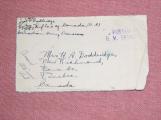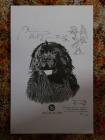1
Exhibit - Hong Kong Recruiting SectionWorld War II, 1939-1945
New Richmond, Quebec, Canada
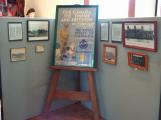 Credits:
Credits:Bay Chaleur Military Museum
2
RecruitmentThe officers of the Royal Rifles of Canada launched a recruitment campaign in Eastern Quebec and Northern New Brunswick in the summer of 1940. Fifty-three young men from the Cascapedia Bay area, eager for adventure, employment, and an opportunity to serve their king and country, responded to the call. Training took them to Quebec City, Valcartier and Sussex, Botwood, Gander and St. John's Newfoundland. Ultimately they were ordered to the defence of Hong Kong in the late fall of 1941.
3
Royal Rifles Recruiting PosterWorld War II, 1939-1945
New Richmond, Quebec, Canada
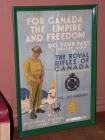 Credits:
Credits:Bay Chaleur Military Museum
4
Cascapedia Boys Awaiting Embarcation Leave20 October 1941
Grand Cascapedia, Quebec, Canada
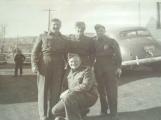 Credits:
Credits:Bay Chaleur Military Museum
5
Cascapedia Boys at Train Station20 October 1941
Grand Cascapedia, Quebec, Canada
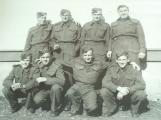 Credits:
Credits:Bay Chaleur Military Museum
6
AnecdoteTraining in Newfoundland was not without its perks. The ladies of St. John's planned a formal tea reception for the lads of the Royal Rifles; an elegant and genteel affair. The soldiers were bored by piano recitals and loudly called for the story telling talents of Edgar Labrecque of "Little Montreal" who told the following tale:
"When I was young and our family was very poor. I had always wanted a bicycle but my father could never afford one for me. One morning he got up and looked out the window. There, leaning against the house, was a bicycle. My father said, ‘Edgar, where did you get that bicycle?' I said, ‘It's like this father. Last night as I was walking home, a girl came along riding the bicycle. She said, ‘Hop on! We'll go for a ride.' So we rode for awhile, then she steered us into the park. We sat down on the grass for a while, and then we lay down on the grass. Then she took her panties off and said, ‘Edgar, you can have anything you want.' The panties didn't fit, so I took the bike."
No doubt some of the St. John's ladies were scandalized and some disappointed that their refined entertainment had been squandered on a group of men devoid of social graces.
7
Leaving CanadaThe Royal Rifles travelled west through Jasper to Vancouver by CNR and boarded the waiting vessel, the Awatea, and New Zealand liner converted to serve as a troop transport. They sailed during the night of October 27th, 1941 and pitched and rolled their way across the Pacific, dining almost exclusively on mutton, passing through Pearl Harbour and Manilla, arriving at their Spartan quarters at Sham Shui Po Camp on the edge of Kowloon, on the mainland immediately across the harbour from Hong Kong on November 16,th 1941.
9
The Battle of Hong KongThe Royal Rifles were only able to enjoy security at Camp Sam Shui Po from mid November until the 7/8th of December when the Japanese simultaneously attacked Pearl Harbour and the Hong Kong airport and defences. The bombardment continued until December 17/18 when the Japanese forces landed on the island. C Company presented the first line of defence without much of their equipment as it had yet to arrive. They fought valiantly but were ultimately overrun by the superior numbers of the invaders. Through the following days the Royal Rifles sustained significant casualties in Hong Kong's defence before the order to surrender was given by the Governor of the Colony, Sir Mark Young, on Christmas Day 1941. Of the 1975 men who had arrived in Hong Kong a month earlier, about 1700 remained to survive internment in Japanese Prison Camps.
11
Gander's Award Certificate12 July 2000
New Richmond, Quebec, Canada
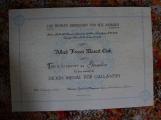 Credits:
Credits:Bay Chaleur Military Museum
13
Early Life in the Japanese Internment Camps . . .After the surrender, the prisoners were marched from Stanley to North Point in front of a truck upon which Japanese were manning two machine guns. An officer on horseback also paraded up and down past the columns of prisoners. The Hong Kong prisoners were marched passed signs of the recent conflict – burnt vehicles, destroyed buildings, and bodies lying where they had fallen and rotting in the cruel sun.
When they arrived at North Point, the prisoners were packed into small cells (5 men shared a cell which measured 6 by 8 feet). The cells were infested with bedbugs, fleas, and lice. Lice was to become a serious and uncomfortable reality for the rest of the winter. The exhausted prisoners waited for hours for food and when it finally arrived Phil Doddridge recalls that it was "mouldy rice and a sort of green cabbage. When you are hungry enough you'll eat anything." Floating in the river outside the camp could be seen the decaying bodies of men and animals.
14
Prison Camp Identification TagWorld War II, 1939-1945
New Richmond, Quebec, Canada
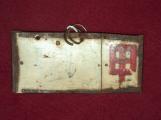 Credits:
Credits:Bay Chaleur Military Museum
